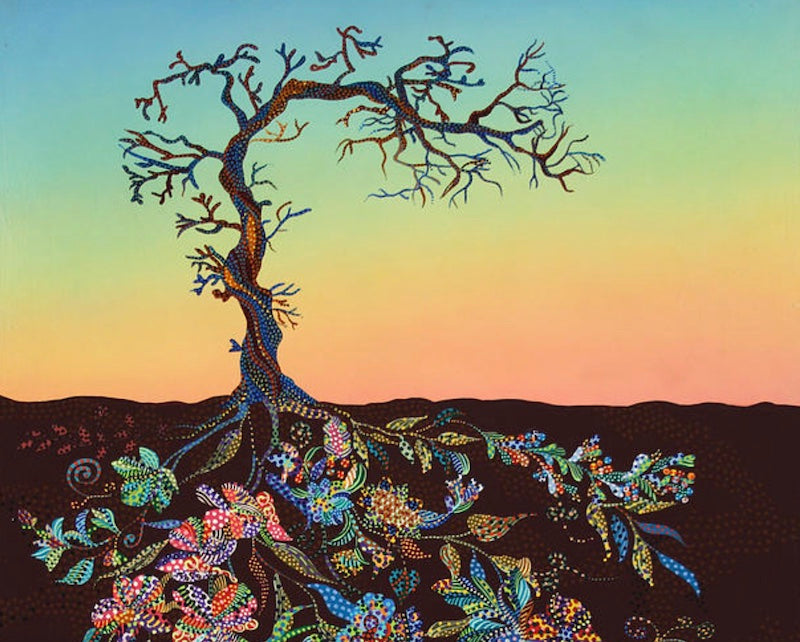
The year is 2006. Blake Mycoskie has just introduced the one-for-one model through his company TOMS shoes. The one-for-one model promises that for every pair of shoes purchased, a pair of shoes will be given to someone in need. Mycoskie implements this through “shoe drops”. The shoe drops feature black and brown children in developing nations, lining up for their footwear, and surrounding the smiling Mycoskie. This story is told over and over again. New country, new children, same Mycoskie. Mycoskie is the savior—helping underprivileged children and communities who would otherwise be “shoeless and destitute”. You too can help these communities by wearing TOMS (a shoe modeled after traditional Argentine footwear).
This narrative quickly garnered support by western consumers who wanted to make a difference in places like Argentina, across the continent of Africa, and everywhere else in the developing world. We would later discover, however, just how flawed the one-for-one business model is. While the intentions behind giving shoes to the underprivileged may be pure, the impact may not be so black and white. As we try to find ways to ease some of the strain placed on marginalized groups, we sometimes fall into a vicious cycle of addressing an immediate concern rather than remedying a long-term problem.

Addressing long-term development goals
All communities have a complex list of needs, but underserved communities are often thought of as a monolith. We look at the basics: food, water, shelter, and clothing. As outsiders, we only see from our limited point of view. So how can we get a greater perspective? How do we, as people with privilege, assist where we don’t understand? The answers are incredibly simple:
- Create a dialogue with the community to understand their immediate and long-term needs and capabilities. We must listen openly, and limit our assumptions.
- Do our best to support the immediate needs, but placing special attention to their long-term goals.
Sounds easy enough.
Yet it feels so good to give, to fix someone’s access to clean water with a $5 donation, that we often end up solving our problem instead of theirs. We want to feel like we’ve helped, when we have often not allowed the community themselves to address the long-term need. Giving is always great, but empowerment is greater. The adage rings true here:
“If you give a man a fish, you feed him for a day. If you teach a man to fish, you feed him for a lifetime.” — Lao Tzu
The problem of market access and white-saviorism
Empowering communities to support themselves is a wonderful endeavor, but we are known to miss the mark. You see, one of the greatest determinants of a community’s financial stability is its available markets. So, let’s talk about market access. Or more aptly, the lack of market access as experienced by developing nations. Market access refers to the ability of a company or country to sell goods and services across borders. Market access can be used to refer to domestic trade as well as international trade, although the latter is the most common context. (Investopedia)
Every country on this planet has its own cultures, people, resources, and experiences. These are internationally valued in the form of tourism, investment, and market access. However, we see disparate values being placed on countries and cultures—often in correlate with racial bias. Nations with indigenous, brown and black populations often struggle to access the global market, even while their resources are extracted by larger, wealthier nations. In turn, their communities struggle to have their basic needs met: access to clean water, food, clothing, shelter, and healthcare.
When we witness this, we are immediately called to ease this most basic of suffering. We see a violation of human rights, a great injustice, and we want to help—now! We often get so caught up in fixing the immediate, that we neglect to go to the root: the people. Enter the white-savior complex.
“The white-savior complex is defined as an idea in which a white person, or more broadly a white culture, “rescues” people of color from their own situation…similarly, the white-savior complex also imposes the notion that the white person knows what communities of color need, rather than listening to how they can truly be of help. This is problematic on a number of levels:
- It centers the white savior as the hero rather than empowering others
- It imposes white/western ideals and solutions onto communities
- It assumes there is an “inferiority” of non-white people, furthering the narrative of “we have to save them because they can’t save themselves”
- It perpetuates “poverty porn” – exoticizing young people of color
- It’s not about justice, but rather about the white savior having an emotional experience that validates their privilege (Black Equality Resources). “
The white-savior complex is unknowingly the foundation for many western charitable organizations, nonprofits, and missionaries. And while its altruistic ignorance has helped many, it can also create a larger problem—a psycho-social dependency and sense of disempowerment—while not truly meeting the needs of the community.

Overcoming altruistic ignorance
So how do we support people in need? Or more importantly, how can we help without falling victim to white-saviorism (or, developed-nation saviorism)? First, notice if the community or person has asked for support, paying close attention to the type of support they’ve requested. Have a dialogue and learn what you can do. The “what you can do” is a combination of the community’s needs and what you have to offer. In the case of Cacao Laboratory’s social impact initiative, we have chosen to use our resources and knowledge to support those seeking market access. Through this program, we work with those who are ready to build a sustainable business or grow their existing one. For Cacao Lab, this honors the needs and abilities of the people we work with—without disempowering them. For Federico and Florencia, Cacao Lab’s founders, business development and growth have been a road to financial independence. But, as is the experience of so many, they could have used support.
“When starting as an entrepreneur, I really needed mentorship—someone to show me the ropes, advise me, and help me understand the market a little better. The idea behind our social impact initiative is to be what I needed but didn’t have. To offer support and guidance to people who are ready to share their gifts with the world,” says Federico, who manages the business operations of the company.
We want to help marginalized communities address their long-term goals through their own power, rather than providing a material band-aid which does not provide them the self-determination we enjoy for ourselves.
Asking the right questions
Blake Mycoskie’s one-for-one model addressed people’s need for shoes but seemed to lack perspective. What do we do when the children outgrow their shoes? How do we address poverty in general? These questions don’t appear to have been considered in its first iteration. And yet, it brought awareness to the intersection of need and saviorism. “What do people need, and how can I help?” is a worthy thought, but it needs to be followed by, “what is the root cause of their need? What have they asked for? What is within my capability? Who can I talk to learn more?”
Asking these questions and thinking critically are stepping stones to an appropriate response, however imperfect it still is. As we grow globally, we become more aware of the needs of our fellow humans. It is up to us to listen generously, share knowledge abundantly, and continue to learn how to do better at doing good.
